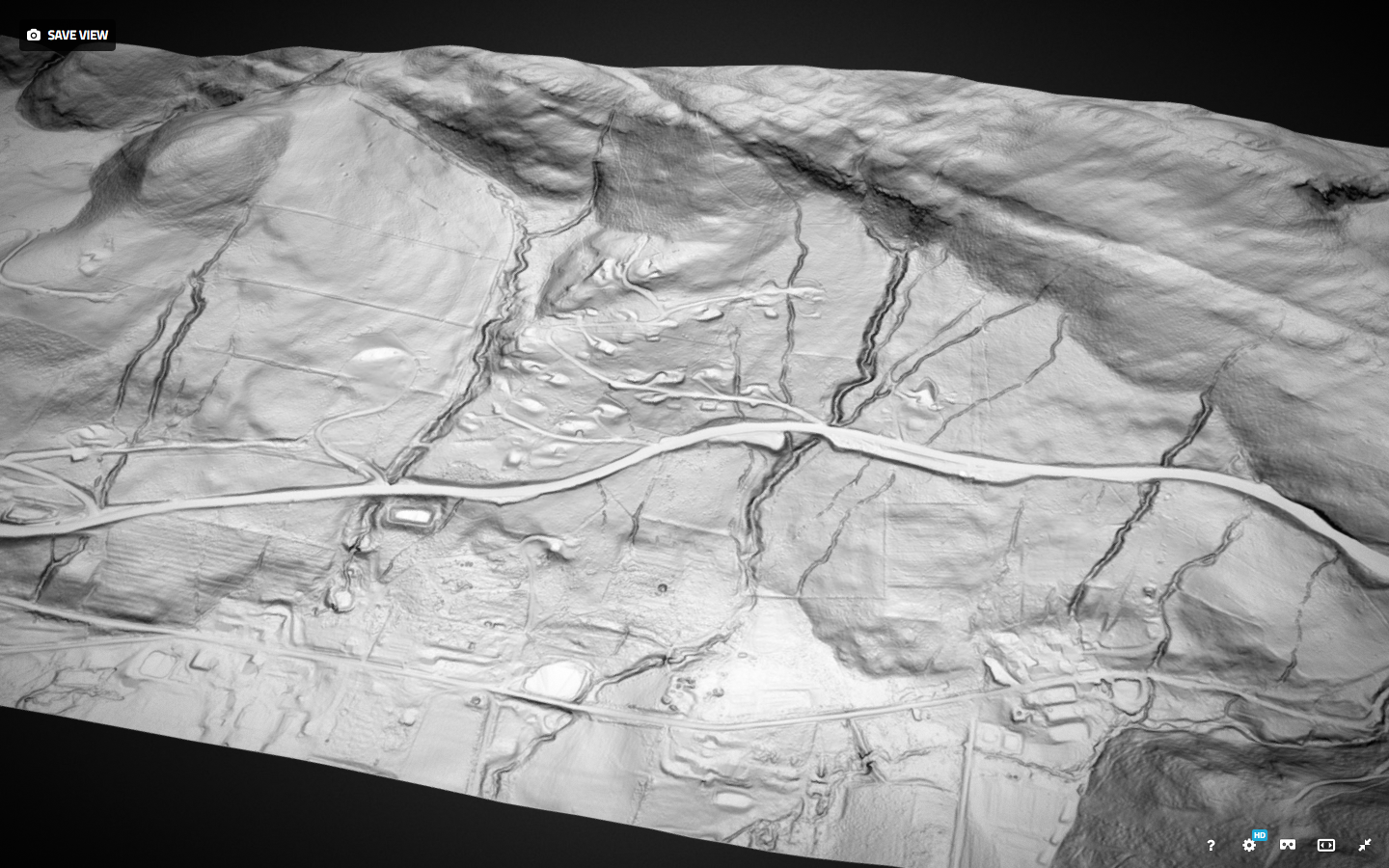
DigVentures’ first crowdfunded excavation in America has shown that if you want new material evidence on the Shakers, Darrow is the place to come and get it.
Around the world, the Shakers are once again becoming a hot topic, with a surge of renewed interest from academics, amateur historians, artists and archaeologists. Recent studies are starting to challenge the enduring and popular image of Shaker simplicity, to reveal the complex history underlying the rise and fall of one of America’s most famous utopian communities.
With 100 Shaker buildings and dozens more ruins hidden on its campus, there can be no better place to gather new material evidence than Darrow. In June, DigVentures arrived to begin the first of five excavations taking place on the campus, inviting Alumni to find out what it’s like to be an archaeologist in what turned out to be a novel and incredibly fun Hands-To-Work morning.
Darrow Seen From The Air… With Lasers!

Mount Lebanon, as seen from the air. You can explore the full interactive model here.
We began our investigation with a spectacular aerial view of Mount Lebanon captured with LIDAR – a laser-based technology used by archaeologists to produce detailed 3D maps of entire landscapes, and find ruins hidden in the undergrowth.
With the aim of mapping out New Lebanon in its entirety, historical maps give us some detail, but the LIDAR images are helping us to locate missing buildings, and provide additional clues (like the mountain’s watershed) that can explain why the Shakers picked certain locations for their buildings.
Impressively, the LIDAR results also proved that the target of this year’s excavation – the Center Family Wash House – was originally twice the size it appears today. Tucked away next to Valentine, the former Shaker pharmacy, it revealed that the other half of the building still survived in the undergrowth.
The Center Family Wash House

Excavating the foundations of the Wash House. At the bottom, a piece of early American redware.
With the big picture view in place, it was time to grab a trowel and start digging. Historical records imply that the Center Family Wash House burned down at some point between 1910 and 1939. But was it true? If so, what was the cause of the fire? And was it really just a wash house? Our job was to find out if there was any evidence left that could tell us what other activities the building was used for, and whether this might tell us anything new about how the Shakers organized their lives.
George Darrow’s House: The Oldest Building On Campus

DigVentures participants excavating a test pit in front of George Darrow’s house
With one team investigating the wash house, we sent a splinter group over to carry out a quick archaeological examination of a mysterious bump in the lawn area in front of George Darrow’s house.
Dating to around 1760, this is the oldest building on the Darrow campus, and part of a farmstead that predates the arrival of the Shakers. Did the bump represent hidden archaeological remains? Does anything of the farmstead survive underground?
What did we find?

Venturers cleaning and sorting artefacts in the very tropical Finds Lab
Over the course of the excavation, we found artefacts from all phases of the site’s history, the oldest being a piece of American redware pottery dating back at least 200 years.

A sherd of early American redware, with patches of the original glaze still visible.
Other star finds included ink pots from with traces of violet ink still inside; a pair of eyeglasses; a cooking dish; a 19th century potato ricer; and an endless stash of bottles likely used for storing the herbal remedies that the Shakers were evidently producing on a near-industrial scale.

A cache of shimmering blue medicine bottles. There were multiple caches like this found within the Wash House.
As we dug deeper, we reached further back in time, exposing a deep layer of ash all pointing towards the hearth as the source of the fire and which will, we hope, help to establish exactly when the building burned down.
Hands to work! Archaeology continues in 2018

Go team! The Venturers excavating in the old Wash-House deserve a big cheer for the incredible amount of archaeology they achieved.
The discoveries from the Center Family Wash House will be analysed over the coming months, and an official report will be available online, but it’s already clear that there is plenty more to come back for.
Over the next four years, we plan to map out the entire area of the Shaker village, assess the standing and demolished structures (including factories, workshops, millponds, culverts, aqueducts, and spillways), and excavate the ruins of a different Family, building up a picture of New Lebanon, its ever-changing internal dynamics, and the evolution of its industrial and agricultural landscape.
The archaeological evidence we recover will provide new and immersive ways for people to learn hands-on about the unique history of the Shakers and, from lasers to pottery sherds, the inter-disciplinary nature of historical enquiry.
The results, including the location of ruins and new information about how the Shakers modified the hillside, can also help inform the planned campus improvements as part of the Designing Darrow campaign.
We look forward to welcoming Darrow students – and alumni – into our trenches in the years to come.
DigVentures will be back on the mountainside in 2018, with excavations taking place during through late May and early June.


